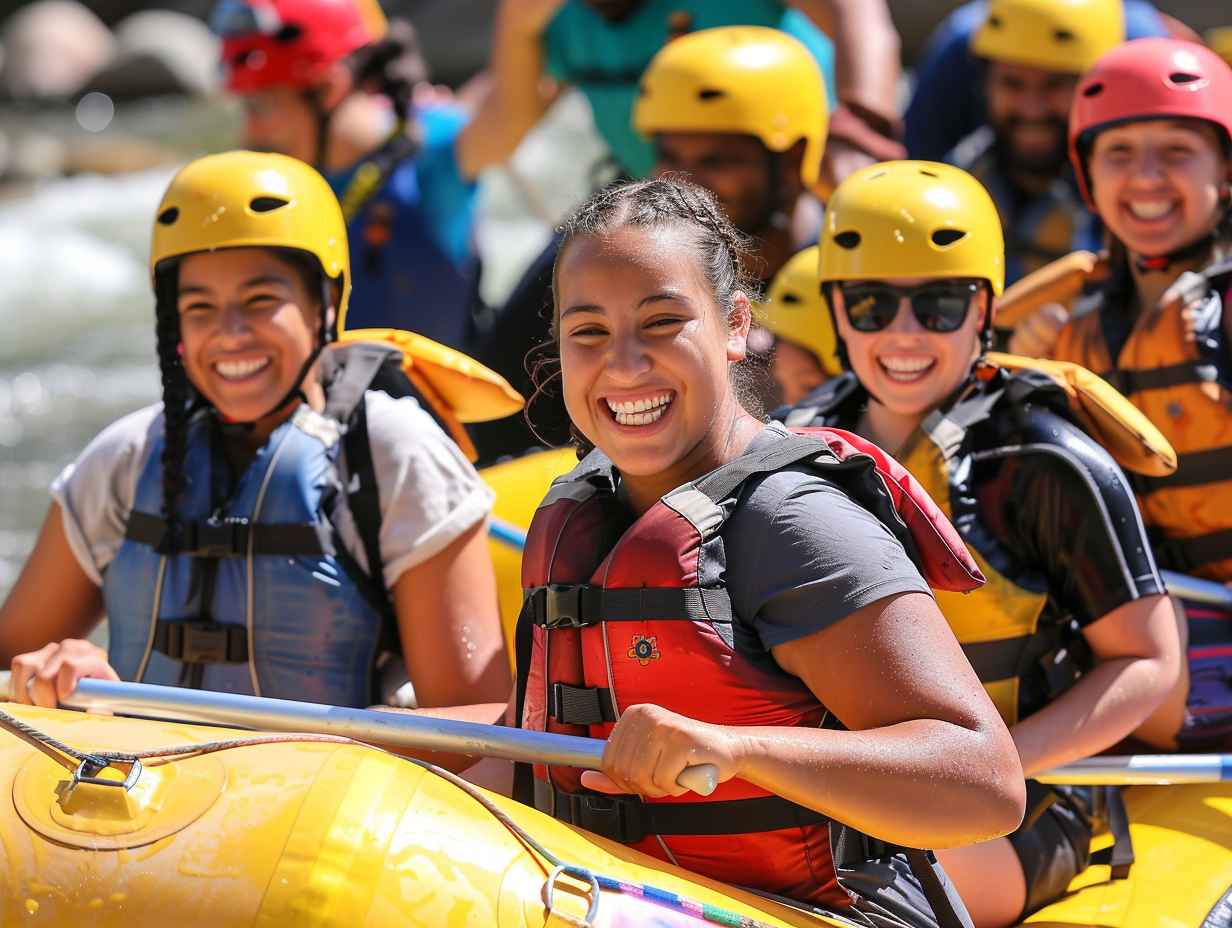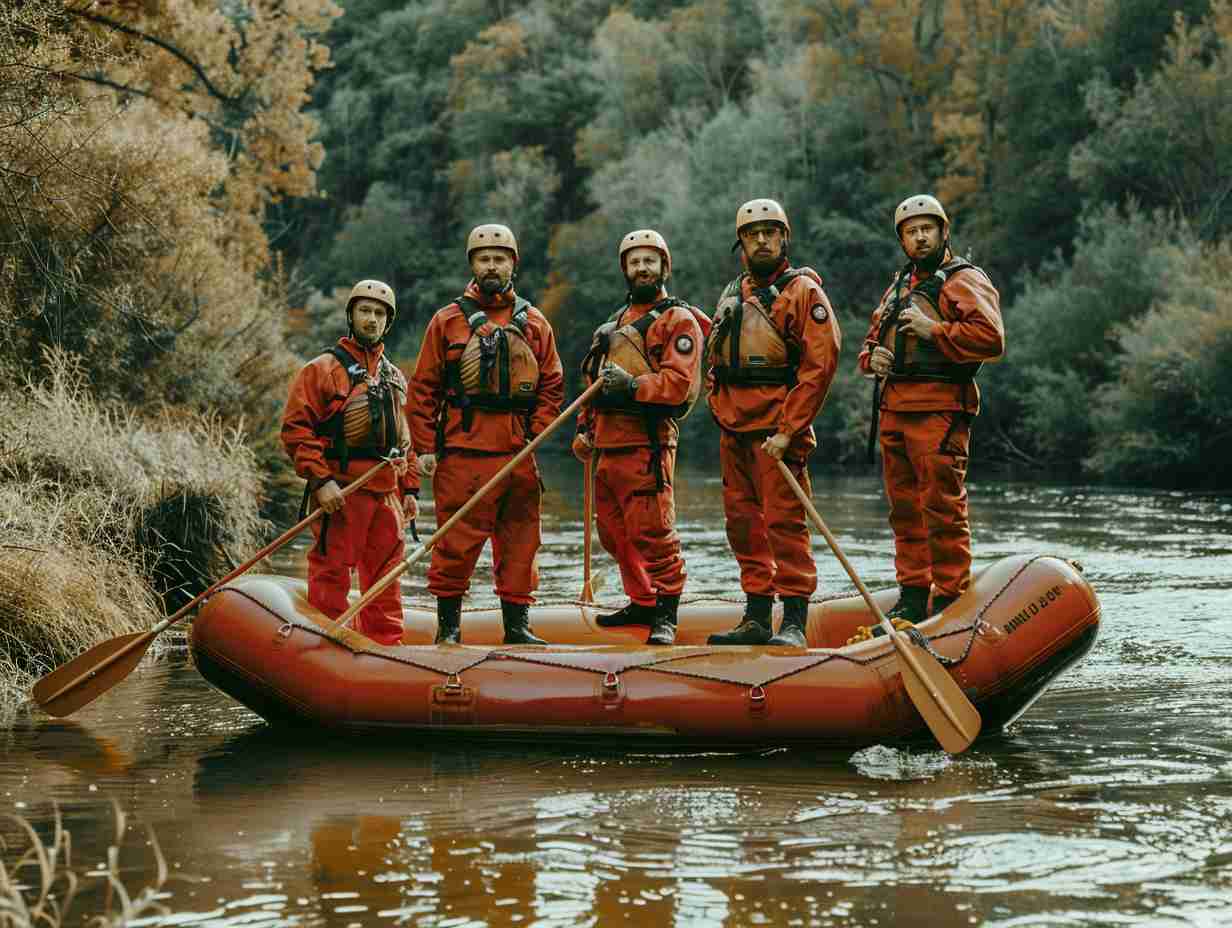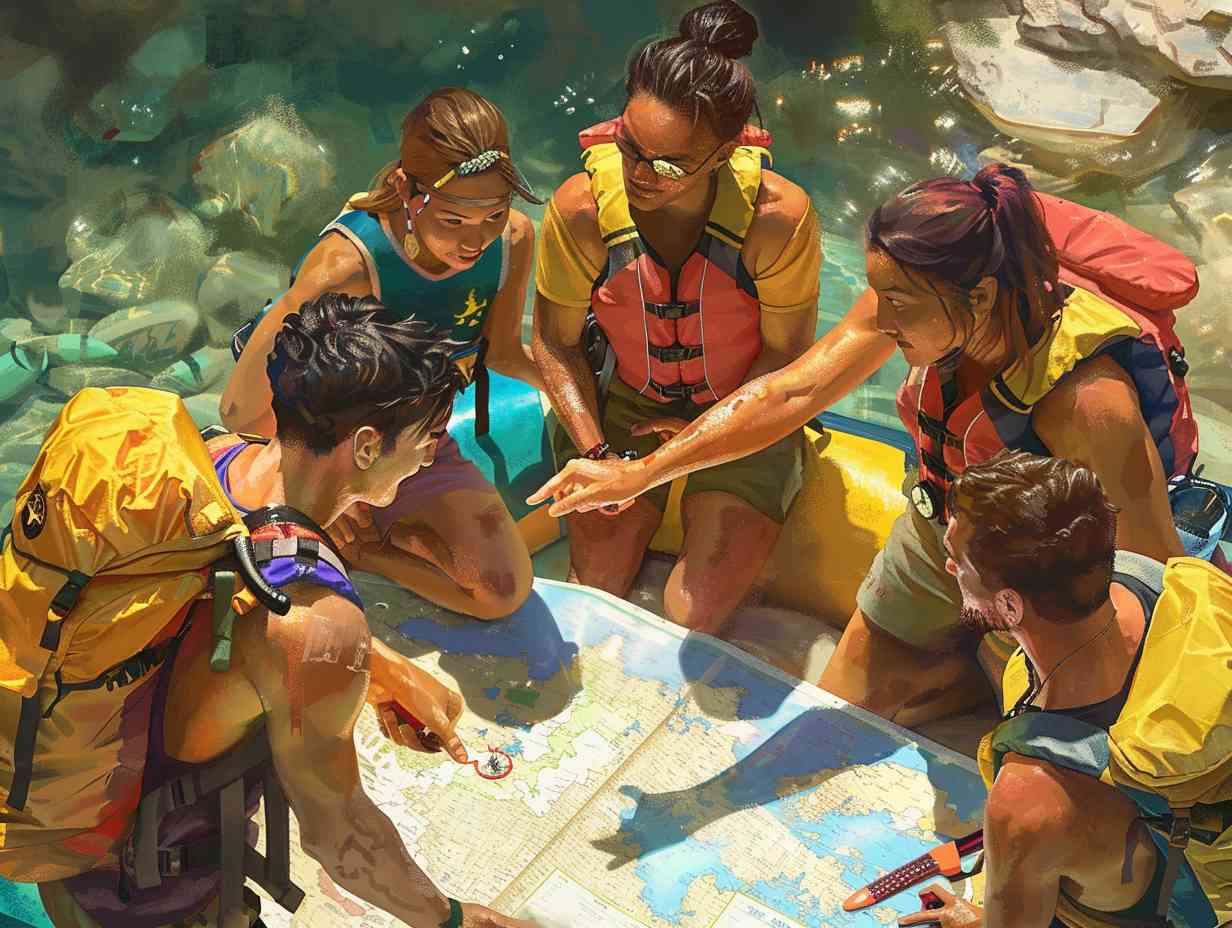
Rafting in Cold Climate
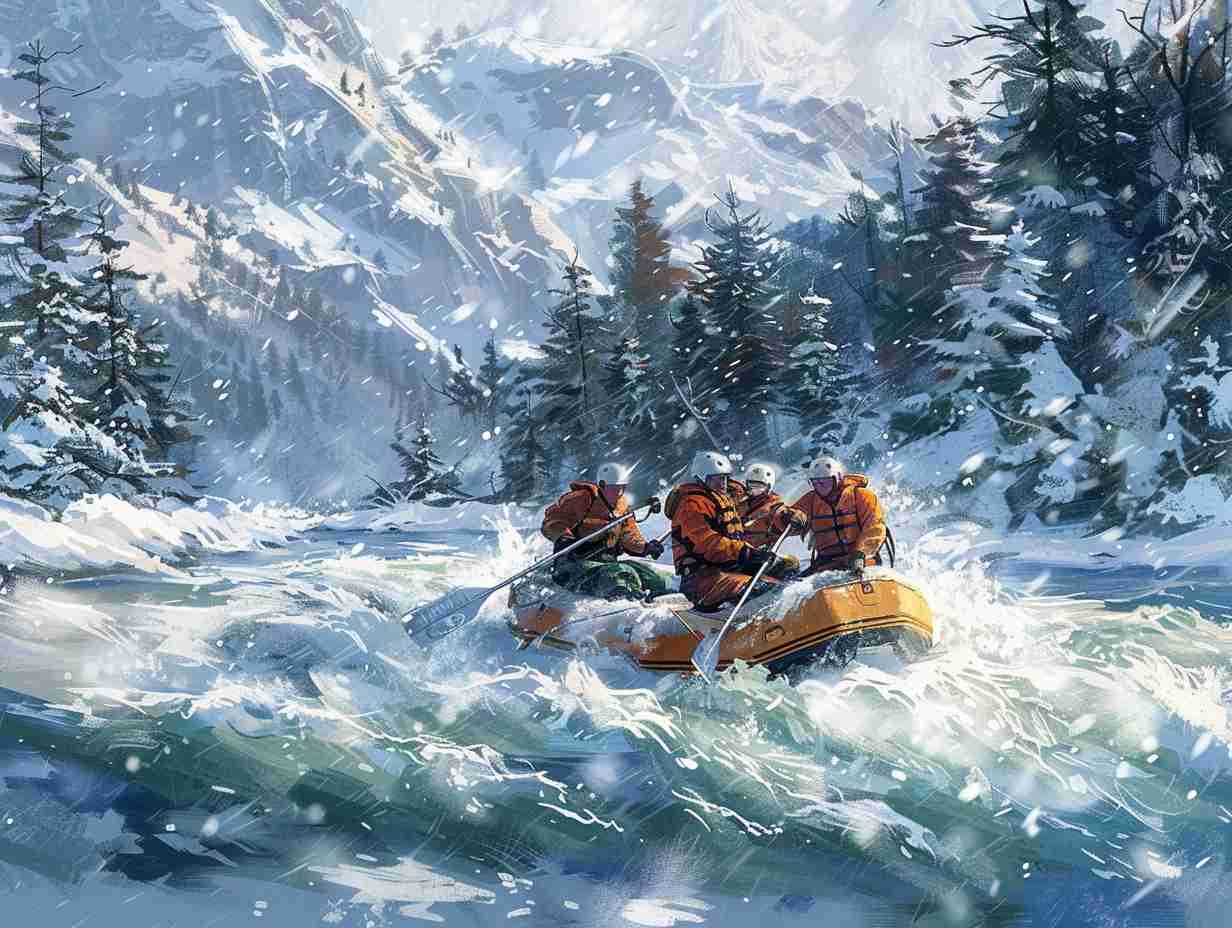
Imagine the river, a silver serpent winding through a snow-covered landscape, beckoning you to tackle its icy waters. But before you start on this chilly adventure, there are essential factors to take into account.
From specialized gear that can make or break your experience to safety precautions that are non-negotiable, rafting through rapids in cold climates requires a unique set of skills.
So, bundle up and prepare to discover the invigorating world of rafting in cold weather – where the thrills are matched only by the need for caution and preparation.
Key Takeaways
- Cold climate rafting offers challenging experiences in icy waters and stunning winter landscapes.
- Essential gear like drysuits and thermal layers ensure safety and comfort in cold temperatures.
- Safety precautions, such as wearing proper gear and checking weather conditions, are crucial for icy water rafting.
- Choosing suitable rapids and staying warm with layers and insulation are key for an enjoyable winter rafting adventure.
Benefits of Cold Climate Rafting
When rafting in a cold climate, you can experience invigorating challenges that test your skills and endurance. The brisk air sharpens your senses, adding an extra thrill to steering the icy waters.
Cold climate rafting offers a unique opportunity to witness breathtaking winter landscapes from a different perspective. The snow-capped mountains and frozen rivers create a picturesque backdrop for your adventure.
Additionally, the cold water provides a revitalizing jolt, waking up your body and mind as you paddle through the rapids. Embracing the cold can also boost your immune system and increase your resilience.
Essential Gear for Cold Water Rafting
To properly equip yourself for cold water rafting, ensuring your safety and comfort, certain gear becomes indispensable. It’s important to be prepared for the cold temperatures and icy waters to fully enjoy the experience. Here are some essential gear items to think about:
- Drysuit: A waterproof drysuit will keep you dry and warm throughout the rafting trip.
- Neoprene Gloves and Booties: These will provide insulation and protect your hands and feet from the cold water.
- Thermal Layers: Wearing moisture-wicking thermal layers underneath your drysuit will help regulate your body temperature and keep you comfortable during the adventure.
Make sure to have these items ready before heading out on your cold water rafting excursion.
Safety Precautions on Icy Waters
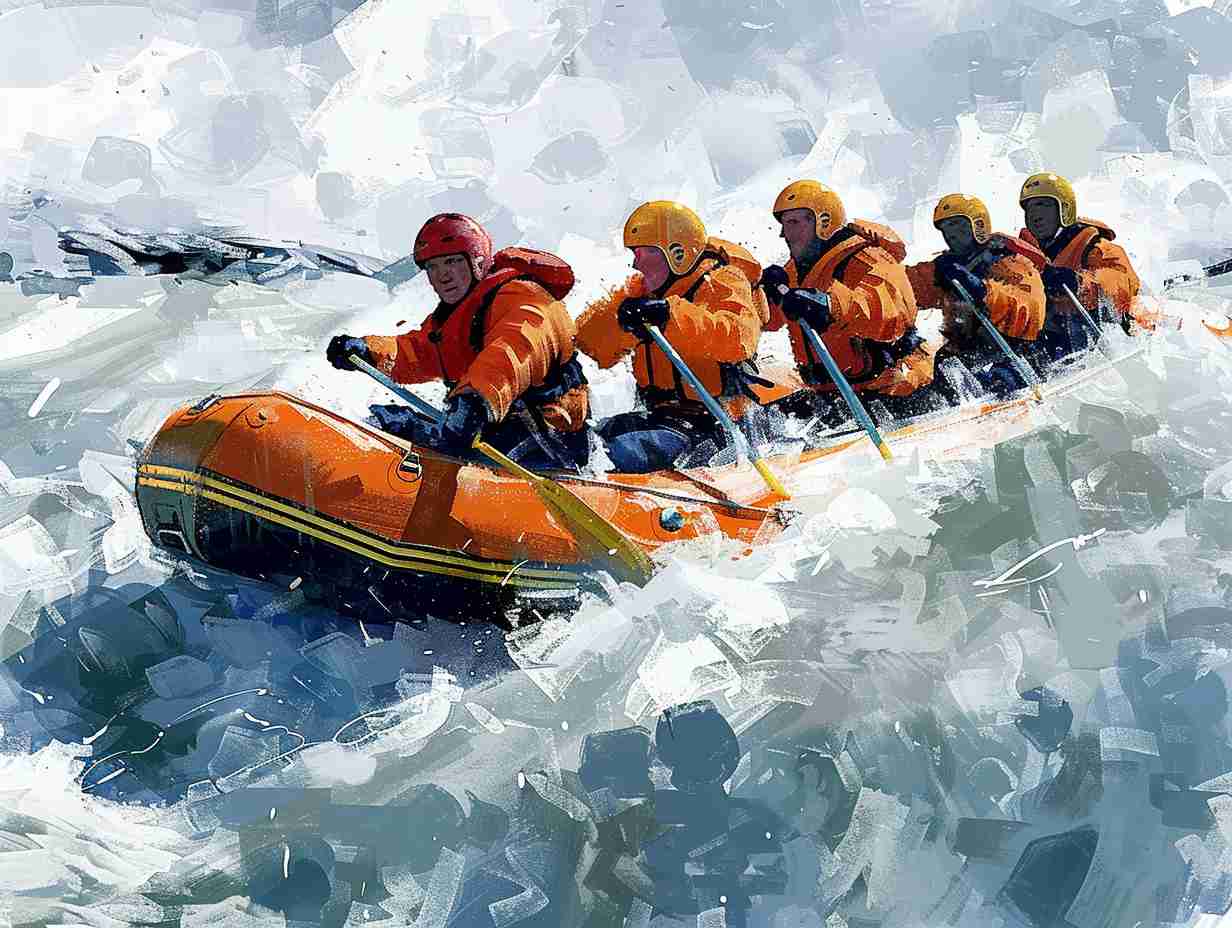
Taking on icy waters for rafting requires strict adherence to safety precautions to guarantee a secure and enjoyable experience. One essential safety measure is to always wear a wetsuit and layers to stay warm. Additionally, make sure to have proper safety gear, such as a helmet, life jacket, and throw rope, readily accessible. Keep an eye out for signs of hypothermia and communicate effectively with your team throughout the journey. Check the weather conditions beforehand and never raft alone in icy waters. By following these safety precautions, you can minimize risks and fully enjoy the thrill of rafting in cold climates.
| Safety Precautions | Description | Importance |
|---|---|---|
| Wear Wetsuit | Keep warm in cold water | High |
| Safety Gear | Helmet, life jacket, throw rope | Essential |
| Team Communication | Ensure effective coordination | Vital |
Choosing the Right Rapids in Winter
Consider the various factors that influence the choice of rapids when rafting in winter to make a safe and enjoyable experience. When steering icy waters, selecting the right rapids is vital. Here are some key points to keep in mind:
-
Rapid Classifications: Guarantee you choose rapids that match your skill level and comfort in winter conditions.
-
Water Temperature: Opt for rapids where the water temperature isn’t dangerously cold to prevent hypothermia risks.
-
Ice Accumulation: Avoid rapids with significant ice build-up that could pose obstacles and increase the chances of accidents.
Tips for Staying Warm on the River
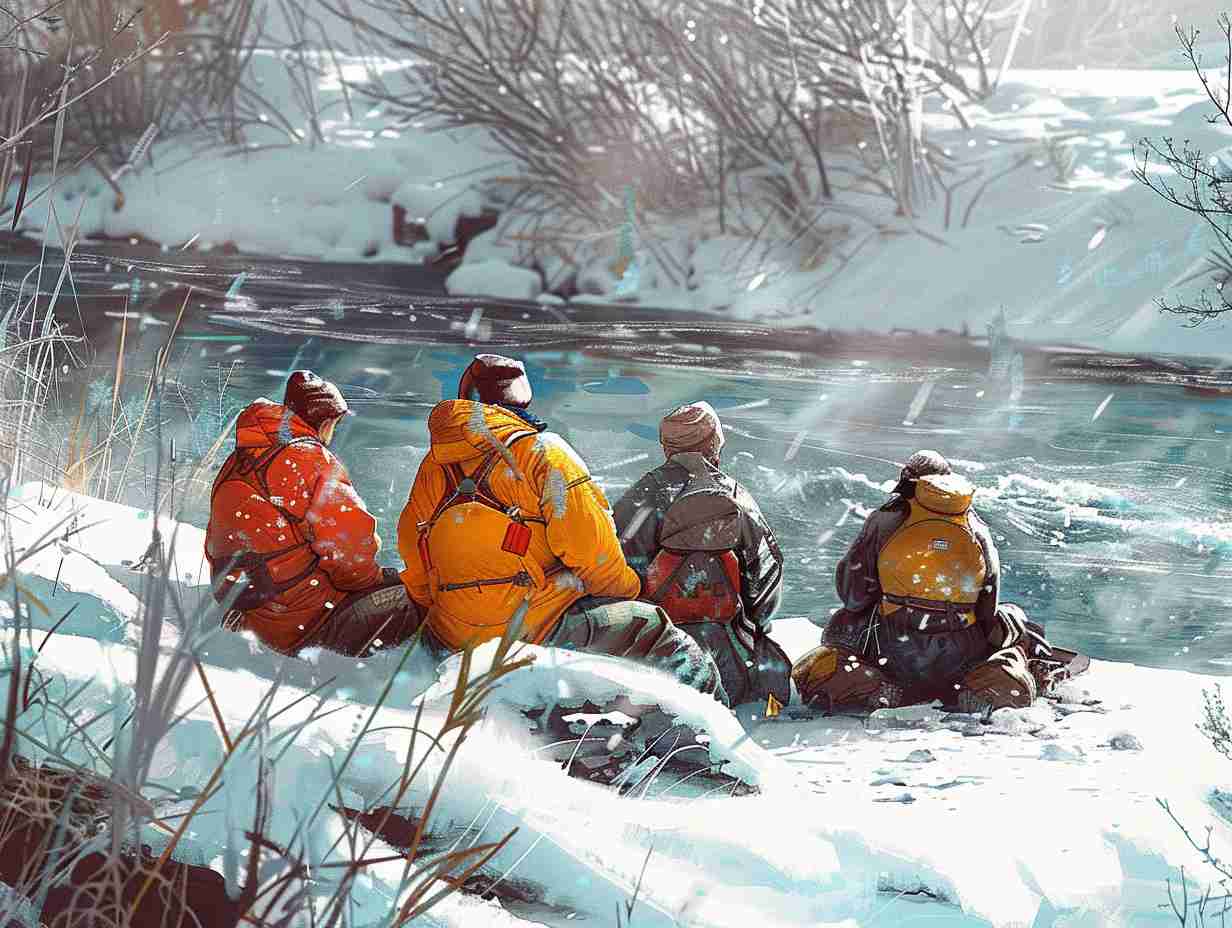
When rafting in cold climates, ensuring you stay warm on the river is essential for your safety and comfort. Dressing in layers is vital. Start with a moisture-wicking base layer, add an insulating layer like fleece, and top it off with a waterproof outer layer to protect against splashes.
Wear wool socks and waterproof gloves to keep your extremities warm. A thermal hat or beanie can help retain heat, preventing body heat from escaping through your head. Consider investing in a wetsuit or drysuit for added insulation.
Bring along extra layers in a dry bag in case you get wet. By following these tips and staying warm, you can enjoy your cold-weather rafting adventure to the fullest.
Frequently Asked Questions
Can You Go Rafting in Cold Climates Year-Round or Is There a Specific Season for It?
You can go rafting year-round in cold climates, but specific seasons may offer better conditions. Factors like water levels, weather, and safety considerations influence the best times to go rafting in these environments.
What Are the Differences in Rafting in Cold Climates Compared to Rafting in Warmer Climates?
When rafting in colder climates, you’ll feel the exhilarating rush of icy waters against your skin. Compared to warmer regions, expect more layers, potential snow-capped views, and a thrilling adventure that will give you chills!
Are There Any Specific Challenges or Risks Associated With Rafting in Cold Climates That People Should Be Aware Of?
You should always be cautious and prepared for challenges when rafting in cold climates. Stay vigilant for ice hazards, hypothermia risks, and rapid weather changes. Equip yourself with proper gear and knowledge to guarantee a safe adventure.
How Long Does a Typical Cold Climate Rafting Trip Last and What Can Participants Expect in Terms of Duration?
On a cold climate rafting trip, you can expect the duration to vary based on the route and company. Typically, trips last from a few hours to a full day. Be prepared for an exhilarating adventure in the water!
Are There Any Specific Techniques or Skills That Are Particularly Important to Master When Rafting in Cold Climates?
When rafting in cold climates, mastering important skills like proper layering, cold water immersion techniques, and emergency protocols is essential. Remember to stay vigilant and prepared to navigate the challenges of cold weather conditions effectively.
Conclusion
As you navigate the icy waters on your raft, remember to stay warm and safe. With the right gear and precautions, cold climate rafting can be an exhilarating and unforgettable experience.
So, don’t let the winter weather deter you - grab your paddle, put on your thermals, and set out on an adventure that will make memories to last a lifetime. After all, as they say, the best adventures happen outside of your comfort zone.
More information about
Affiliate information declaration: We may earn revenue from the products referred on this page and participate in affiliate programs.
